Different Types of Paper for Art – Detailed Discussed By An Expert
Getting a paper which is just right is always difficult, especially if he/she is new to the industry. Art has been around us since ancient.
You know what?
Art is something which I recently started, and I started liking it from the very moment I got in. Paper was the one single thing that I had to use every single day, and it saddened me much that I didn't know anything about the thing.
Which is why I decided to research art paper, and I found so many useful information that it was just wrong to keep all the knowledge to myself thus being the reason to write this article.
Knowing the Paper Briefly
Paper is in general made from a fiber which is stitched together. For the paper to be sturdy, the manufactures must make sure that the threads are long in size.
1. Cartridge paper
The name was given to the paper because during WW1 the cartridge shells were packed using this paper. The paper is made from a wood pulp.
Wood pups are used because this provides an excellent surface for the paper if you want to draw something quick although corrections are not taken well by the paper.
2. Sugar Paper
Cheap to produce and good enough for disposable works. This kind of paper is good enough for quick drawings, but if you are planning to store them over time, then you are out of luck.
Sugar Paper will fade over time, and if it is painted on, the color will react with the paper and cause the entire page to turn yellow over a short period.
3. Free of Wood Paper
It’s only the name that suggests that wood is not being used but in reality, wood free papers are made from wooden pups same as cartridge paper.
They have similar properties as a sugar paper, and it is more like a cross of Cartridge and Sugar paper.
Don’t ask me why it is named wood free paper! It was named by some guy in history who thought it would be funny of something in the future. Just kidding. But seriously, I just couldn't find why it was named that way.
4. Japanese Paper
Japan, who doesn't like Japan? Everything is beautiful in Japan, and things are no different which are made there.
Japanese paper has the most amazing feeling when you hold them. In Japan, paper making is passed down from one generation to the other in some families.
5. Archival Grade Paper
The kind of paper is best if you want to store for a longer period as they don't discolor and are made from a material which is strong and acid-free. They are all made from one hundred percent cotton.
Importance of Weight & What Does Size mean?
Weight is insignificant to many whiles being very important to others. All papers come in different weights, for instance, 120gsm to 850gsm is the standard weight for fine art paper while drawing paper are constant at 130gsm.
Size in the world of papermaking means two things. One is the length or cutout that the paper receives, something that we are all familiar with. The second one is a substance.
Size is a substance used to strengthen the fibers of the paper, toughen the surface of the paper and make the paper durable. Confusing? Just read the situation where the word “Size” is used, you are going to get used to it.
100% cotton watercolor papers have great strength which they inherited due to them being interweaved but try adding few drops of water to them, boom the papers are screwed. This is why sizing is important.
Sizing can be further broken down into two types — internal Sizing and Tube Sizing. Let's discuss the details on the two.
When a manufacturer is using internal sizing to its papers, the size is added to the pulp of the paper while it's being made. This gives the paper durability to withstand water media paintings.
Tube-sizing works best if you apply the size once the paper is done. This gives the surface a much-improved feeling. The size is applied either when the paper is dry or in the molding machine.
Art Paper Structure
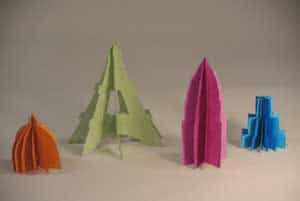
There are countless paper structures which I got to know of while I was doing my research, but I cannot write a thesis paper on art paper structure now, can I?
For which I picked the most popular and best structure of Art paper which fascinates most of the artists.
1. Hot Pressed
This kind of papers has a tough or hard feel to the top of the paper. This is achieved by pressing the paper against a hot cylinder. What this does is, makes the surface of the paper finer by bonding the fibers which are present in the paper closer together.
Different kind of manufacturer produces paper in different ways which is why it is best if you buy each paper by feeling the paper.
2. Cold Pressed
This is one of the most popular surfaces which a water color artist chooses. Usually a blanket is used to press paper multiple times until it finishes, but in this case, the blanket is not used to press the paper for the second time.
What this does is that it helps to hold pigment and carbon well in the paper. This means the paper can easily be drawn on or painted on.
3. Rough Surface
If you are more into watercolor in a landscape view, then this should on your shopping list. The rough surface adds a fine texture to the paper. Word of advice though, the rough surface is not for beginners.
Art Paper Categories
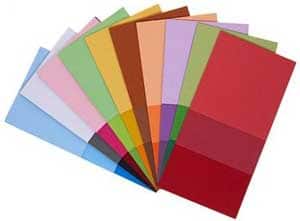
Let me start the most important part of the article which is the categories. Art papers are Categories under five main kinds. Which are Orient Papers, Visualizing Paper, Drawing paper, Specialty paper, and watercolor paper.
Will discuss the details and everything you need to know about each of these in details below.
1. Oriental Paper
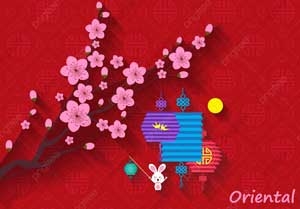
This paper is no joke. Orient papers are one of the most absorbent papers which can be bought from the market. Due to the absorbent nature of the paper, many unskilled or absent-minded artist are scared to use it.
The slightest hesitation or lack of skill will be portrayed on the paper. This paper truly needs a person's body and mind to work in harmony to create any sort of work.
This being the reason many from the western continents are scared to use the paper and use the paper as high-quality printing paper.
The paper will absorb paint and ink very fast which is why if you hold your paint brush soaked in the paint over the paper too long, unintended areas of the paper will start absorbing the paint from the brush point which is on the paper.
This absorbent behavior of the paper also makes it ideal for many experienced painters as they can make shades of color or mix color to make a new one or multivalued edge when the article strokes the brush on the paper.
Oriental papers are usually fragile, and they are made thin for a reason. In Eastern Continents where the paper is made, people out there know that learning to paint on the paper is challenging and almost no one will succeed the first time.
This being the reason the people in the eastern world made the paper thin so that practicing doesn't cost a lot of money. A thick version of the paper is available, but they tend to be more expensive.
Another important reason is that Oriental paper just doesn't need to be thick. Being thin works just fine. Papers are usually thickened to compensate for the bulking or resist bulking altogether.
But Oriental papers are naturally resistant to swelling when they come in contact with water paintings.
You! Yes, you. If you are planning to use Orient paper to practice, don't jump and get the high-end papers. Start with something cheap and with shitty quality.
This is because I am 100% sure by the time you have understood the characteristics of the paper and can paint on it without making a mess, a lot of paper would be wasted. Therefore save the money for the paper when you are ready for it.
Protecting Orient Paper
For the paper being too thin Orient paper needs to be protected specially. The first ever recorded making of the paper kind was 1800 years ago. Ever since the discovery, the ancient ones have used a special technique to protect the paper.
Traditionally they are protected by first mounting the drawn Orient Paper on a piece of heavy paper or another paper of the same kind. Then the mounting is taken and mounted on silk.
During those times, it came to someone’s attention that the sticky substance which was used as “Glue” back then breaks down over time. To solve this problem very little or just enough of the substance was used to hold the painting or artwork in place.
What it helped to achieve was that the artwork or painting could easily be removed once the adhesive has started to deteriorate
Another way that the ancient once protected these paper from wear and tear was putting the paper in a scroll. The scroll kept the paper hidden from light and air.
Available Quality of The Paper
An oriental paper is available in a total of eight quality. Will try to give you guys the best guideline for the qualities available.
Hasho
A paper which is widely known for its absorbent form factor and fluffiness. Using a pencil or eraser of any kind will take a toll on the paper as the surface cannot handle the hard materials.
Hasho was first made by a family in the Echizen province which is in Japan. If I am not mistaken, it was during the Fourteenth Century. Kazo fibers are used to manufacture high-quality papers whereas Sulfite pulp is used for the lesser quality ones.
The paper is a form of art itself. It's a beautiful white finish and history which surrounds the paper will make anyone compelled to buy the thing.
Eighteen inches by twenty-four inches is the most popular and common readymade Hasho paper out there. The paper can be found in a wide variety of finished surface which ranges from cold pressed finish to a vellum finish.
Kozo
"Goyu" this is another name that this paper goes by. The more massive versions of the paper are known by that name. Kozo and Hasho, although made from the same fiber, are entirely two different products.
Kozo paper is sized. Sizing makes the paper a lot less absorbent and brings a little durability to the paper. This makes the paper lot more versatile than Hasho paper.
The paper is made from 100 % use of “Kazo” fiber which is why the paper is very thin. The people in the western world are a lot more comfortable working with this kind of Orient Paper than they are using Hasho paper.
The most common size which can be found in any marketplace is twenty-four times thirty-six.
Mulberry
A full sheet of mulberry paper is twenty-four times thirty-six. Mulberry paper and Kozo paper are the same things. Mulberry is the name of the tree from which Kozo fiber is extracted.
Why doesn't it have different names then? This is because one is produced in the western world and the other in the Easter world.
The western version of the Kozo paper is seldom used for drawing, the main uses of these papers are repairing documents, adding hinges on picture framing, etc.
Troya
The kind of paper is made from the same fiber as the one being used to make Mulberry paper which is Kozo fiber although the paper doesn’t share any resemblance with the other paper made from the same fiber.
Troya paper is made in such a manner that they are less absorbent and have pours in the paper which allows the paint to go right through the paper. This is really unusual for orient paper to do such a thing.
This is the thinnest orient paper available, and because the paint tends to pour through the paper, it appears that it is very absorbent, but the reality is different.
The paper is mass manufactured by the use of a machine which is why many westerners won’t use the paper for artwork. What they will do is use the paper for slip sheets which will help protect the surface of another artwork.
Gasen
Enough about Japan let’s move to China. Gasen is the oldest kind or orient paper which is still being used in modern time. This gem of a paper was first made in Chine and is still being produced there.
The Japanese and the Chinese both use this paper for Calligraphy and for paintings which are done in Chinese style. It’s not like other papers are not used for the work, it’s just that Gasen paper is very superior in quality and performance.
During early days, the paper was made with using tampi and rice straw, but in modern times the paper is being made with Kozo or tampi which is being mixed with rice straw and bamboo.
Longevity of the paper is slightly reduced for using the rice and straw bamboo, but that matters less to the manufactures and buyers as tradition is important to both.
This thin and highly sized paper after completion becomes very strong, but yet this paper is not classed as drawing paper, I will tell you more about drawing papers later.
The paper has one of the most durable surfaces in the paper industry, and the Chinese have used and still use this paper to draw paintings on it with great details.
27” x 54” is the most popular size of Gasen paper which is used by artist all around China and other parts of the world.
Torinoko
The name was given to the paper because the surface of the paper resembled that of an eggshell. Gampi is used to make this paper it has been like this since the 18th century. This paper is very durable and is said to be the most long-lasting paper of them all.
Gampi fiber is extracted from a special kind of plan which was available in certain parts of Japan and Asian Countries. In recent times the plan from which Gampi is extracted from has become very rare in Japan, and the ones available in other Asian Countries are no good enough.
These being the reason the price of Torinoko paper has skyrocketed up and the once which are at the lower spectrum of the price are not made from 100% Gampi.
There is a company named Andrews Nelson & Whitehead which can replicate close to the original feel that the paper gave if produced using 100% Gampi.
They use Kozo and Mitsumata combination with added sizing to achieve that. Torinoko papers are made to be non-absorbent papers. The overall paper lifespan is unquestionably long, but when it comes to the surface of the paper, the durability varies with the manufacturer.
If a Torinoko paper is mass produced by a company, the overall durability and surface durability both will be questionable. But if the paper is made by hand by makers who are in this line of work for generations, there won’t be any room for question about the durability.
Machine and handmade Torinokos most popular paper sizes are 18” x 24” and 24”x36” respectively.
Masa
This is the kind of paper which is loved by almost all artists as this doesn't require them to be god tire skilled. Watercolorists of the western world love to work with this paper.
The paper resembles the look of a Torinoko paper but is made with sulfite pulp, and if you dip the paper in water, it will slowly but surely start to rip apart.
This is a machine-made mass-produced paper although not known for its durability nor its quality, what it is popular for is its inexpensiveness.
2. Visualizing Paper

Visualizing papers are designed in such a way that they are transparent and are very thin. Visual papers can be divided into two groups one is tracing paper (rag and non-rag), and the other is Graphics Paper.
Let's learn more about the types of visualizing paper.
Tracing Paper
Tracing paper as discussed before can be found in two categories. One is Rag, and the other is non-rag. Let’s talk about the rag version first.
Oils or resins are used to make Rag tracing paper although they are not as transparent nor does it have as durable surface as sulfite vellum. What is Sulfite Vellum, you ask? More about that later in the article.
Moisture effects are considerably lower on the Rag tracing paper which is why these papers they don't tear or crack easily compared to their non-rag counterpart.
Non-photo blue graphs are imprinted with in the rag tracing papers which allows the graph to act as a drawing guide without actually appearing on the final product.
Let’s talk about the Non-rag or sulfite paper that you were reading about. Non-rag tracing paper comes at two prices one which is expensive, and the other is cheap. There is no in-between price for the papers.
The high-end tracing paper is referred to as Vellum Sulfite. Vellum is a high-quality tracing paper which is used when you are at the end of your drawing and want to focus on control and details.
Canson Vidalon is a vellum sulfite paper which is manufactured by a French company. The paper is made using serious pressure until it turns transparent. This is the strongest and the most durable tracing paper I have ever seen.
The paper surface is so strong that you can scrape of ink off the paper with a knife without damaging the paper greatly. This feature makes it an ideal to be used by the artist who is using ink.
There is a major drawback to this paper though, Oils produced by our skin and moisture can easily destroy the paper. The paper is easy to crack and tear, and the worst part is the age characteristics which is shit, absolute shit.
Rag and non-rag tracing papers are available in the market in either pads or rolls which can quickly be picked up by anyone.
Graphics Paper
Reached the final stage of your graphic art? Use a graph paper. This is what 99% of every graphic artist does.
Any paper which was 100% cotton or made from 100% rag were labeled as “Bond Paper Good for Graphics Art," just a few years ago that changed.
Today the same paper has a shorter name and are called Graphics paper or market paper or something similar.
All the paper which are intended to be used as graphics paper is of excellent quality. They best feature that the paper has is its translucency, followed by its Whiteness.
Graphics papers unique behavior and color makes it unique which you can use to differentiate graphics paper from tracing paper.
Word of warning though just because it has an excellent built and surface doesn’t mean it can withstand the test of time.
3. Specialty Papers
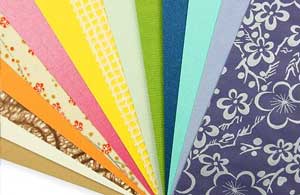
Specialty papers are available on every shop and as the name suggest each paper has its specialty. Over a hundred types of these paper exist, I have no time to mention over one hundred types of paper, what I have time for is writing about the bests.
I will be stating 8 of the most famous specialty papers which is the most used by people all over the globe.
Separation Sheets
The materials used to manufacture these papers doesn’t necessarily have to be cotton and rag. The materials used can be chosen from a wide variety of raw materials.
The papers are made in such a way that they are pH neutral and nonabrasive which makes the paper ideal for isolating artwork on paper and from containers. These papers are also used to protect the surface of other artworks.
Strathmore Slip sheets, Troya and Glassine paper, are the best ones to use when you are buying separation paper from the market.
Transfer Paper
Drawings or writings are transferred from one paper to the other using this transfer paper. Well, known examples of transfer paper are Graphite and Carbon paper.
Carbon paper can be used to transfer drawings onto nonporous paper surface easily. Drawbacks of carbon paper are that the paper is greasy and once applied for use to a surface it is hard to erase.
Graphite, on the other hand, is much easier to use if you want to transfer your work onto paper or board. Erasing imprints of graphite paper is easy, and this paper is good for detailing. The drawback being work cannot be transferred to the nonporous surface.
Stencil Papers
The kind of paper was very popular among artist but has dropped significantly due to the development of Frisket and Drafting polyester.
Frisket is developed from a thin paper or plastic which is applied with a low track adhesive on one side of the paper. Another paper of some kind is attached to protect the low track adhesive side until used.
Drafting paper is now being used for making durable and long-lasting stencils. This paper specifically is being used because it's not affected by moisture, keep the paper rolled up for days, and yet it will unroll flat on the table and lastly because it won't tear.
Calligraphy Paper
Strathmore Charcoal Paper and Canson Mi-teintes are the paper of choice when it comes to expert Calligraphers.
The paper which is used for Calligraphy will not bleed, Feathers, Scratch or wrinkle when you will apply ink of some sort on the paper.
There are millions of papers on the market which are labeled as Calligraphy papers but make sure you chose the right one before you buy it.
Coated Papers
The paper is not considered safe for permanent fine art but what it is good for is Graphic Art purposes. These purposes are printing, bookbinding, mock-ups, etc.
Papers with metallic coating can also be found in stores — coatings which consists of colored ink or adhesive-backed color paper.
Decorative Paper
Marbled Papers, Cockrell's paper, and Folk papers fall under this category of paper. Let’s have a further look at what these papers are.
Marble papers are made by using a using oil-based inks which float on water. Oil-based color is added on the water surface, and the paper is placed over the color afterward.
Paper is a very absorbent material being such the paper absorbs the color from the water surface and gives the paper a marbleized pattern.
Cockrell papers are made using the same technique. The main difference is that the colors are combed very skillfully into traditional patters before transferring the ink onto the paper.
People responsible for this work are so skilled that they can make two sheets of paper, which are made individually, look almost identical. The people responsible have trained more than 40 years before mastering the art.
Cover Paper
The paper is exactly what the names suggest. Cover paper is another paper which is produced by the printing industry. The main use of this paper is covering Magazines, booklets, etc.
These papers were never designed for fine artwork so don’t bother using them for permanent work. Rough sketches on the paper should be just fine.
Mingei
This is a traditional Japanese paper which is handmade using Mulberry paper. These papers are dyed or sometimes printed even hand painted. Hand cut stencil contains hundreds of years of old patterns.
These papers are mainly used for binding books which are high end and as a gift. Artist may draw on this paper as well, but the price of this paper is high, so make sure you have enough budget.
4. Drawing Papers
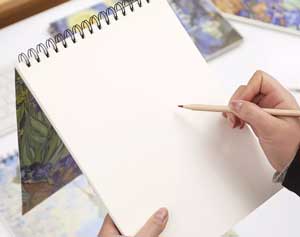
A paper which has a rough surface which can bite off sufficient particles of a drawing material is known as a drawing paper. Drawing papers should also very durable as they have to handle erasures multiple amounts of times.
Every drawing paper is different in its way, for example, a line made with a pencil will appear different on the same paper manufactured by different brands. I will make it easier for you to choose the paper.
The drawing paper industry has four groups of paper which I know off. I will be discussing the details of those paper below.
Bristol
Wanna know about the most durable drawing paper? I present you, Bristol. This is the strongest paper which money can buy. The paper goes with two finishes plate and vellum.
Bristol paper has a very hard surface which is made by compressing, polishing and sizing the fiber of the plant used severely. These papers are made in such a manner that an artist can use both sides.
Plate surface Bristol is very smooth, it is so smooth that some even compare it to the finish of glass. This is ideal if you are using ink for your painting. The final art form looks nice and crisp on the paper.
However, if you are using colored pencil/marker, charcoal, pastel or very soft pencil then this is not the right choice. This is because the surface is too smooth.
Vellum surface Bristol is the best to use for using pencil, color pencil, charcoal, etc. Ink works just fine on the paper some artist can even produce better results than Plate surface while using ink.
Be careful while using vellum surface though as natural oil produced by your hands can affect the paper as the paper is very absorbent.
100% cotton is used to produce this fine paper. The material used gives the paper the strength for which it is well-known for. With the increasing demand for cotton in other industries finding a Bristol with fine quality can be challenging in certain places.
There is one more thing that you have to keep in mind before buying the paper. The thing is the number of plies. Two-ply Bristol is the most common in the market.
One-ply Bristol can be used as tracing paper because it is very thin and translucent. Because of it being so thin extra care must be taken as damaging the paper is rather easy compared to its two-ply counterpart.
As mentioned earlier two-ply Bristol is the most common to find. Two-ply Bristol is durable and doesn't require as much attention as the One-ply version. This is very durable and is hard to tear.
Three, Four and Five play Bristol are rare as they are overkill. Two-ply Bristol is more than enough to protect your artwork for extended periods. If you want the extra protection, go ahead get the thicker ones.
Word of warning though Five-ply Bristol is very heavy. Weight can easily be compared to that of an illustrator board.
Charcoal and Pastel Drawing Paper
The colors on these paper are more important to many pastelists than the coloring material he/she is using. They usually will study the paper just like a printer would study it before printing on it.
These papers can be found in two finishes laid and irregular. In a laid finish, the imprints of normal patterns of wire screen can be found on that paper which comes from the papermakers mold.
Irregular finished papers are made by pressing a wet paper through an irregular arrangement of small speaks on the surface.
Finding pastel or charcoal paper are somewhat easy as the demand for these papers is climbing every year. Both papers are available to the general public in multiple kinds of texture.
Although these papers are not as durable as Bristol paper but they are very capable papers, if you avoid erasing lines drawn on the paper. The paper will be unusable if you keep on erasing stuff on it.
Drawing Paper
In recent times drawing is more popular than ever, with this growing demand manufactures of "Drawing Paper" decided to name their paper exactly what it was made to do. Smart ain't it?
Drawing paper has a wide array of quality to choose from. Newsprint paper to the best quality handmade ones, you name it, that have it.
Similar to the Bristol paper these papers are durable papers but not as durable as Bristol. This is because the papers are not compressed of heavily sized.
The paper is used to light art materials such as pencils, Crayons, etc. It is because of the durability of the surface and for the absorption of the paper. Why should you get the paper?
The answer is for the size that you can find. Drawing can be found in large sizes for allowing any artist to go all out with their drawing.
Bond Paper
Finally, the last paper that I will have to mention is the bond paper. This paper is at the last because its popularity is not too high when it comes to drawing on the paper.
Although the finish of the Bond paper is more like a Bristol but don’t let that fool you. It’s not even close to being as useful as a Bristol.
The papers are available in the market, and many artists use this paper in a lot of creative ways. If you are creative enough, sure buy one from the market.
Watercolor Paper
The history that this paper has is older than some countries. Water color papers were first made in China in the year A.D. 105; it was not before the 18th century that the western world was able to make their version.
The man who was responsible for bringing this gem of a paper to the western world was “James Whatman." He made the paper available to the market in three finishes Hot pressed, Not-Hot-pressed and Rough.
In recent times "Not-hot pressed" is known as "Cold-pressed." "Hard size" is what Whatman was complimented for. Back in the day, this was classified as a drawing paper and not Water Color Paper.
Being able to wash your paper to rub of watercolor was just fascinating to many. This is made possible for the "Hard Sizing." The drawbacks of this were that you could accidentally wash your drawing off.
Ever since then the "Hard Sizing" became a must while manufacturing watercolor papers. Many manufacturers tried resolving the problem, in which you accidentally wash your paint off, but failed.
Surface & Texture of Watercolor Paper
Texture creates a sense of depth in watercolor paper. Artist archives this i lots of ways. Some rely on the angle, some artist relies on the color itself, whereas others will use the light to make it appear different.
Artist each have their style for creating texture on the paper. The minimum amount of effort is needed by an excellent artist to master the art of adding depth to the plain paper using nothing but color and brush.
Let’s talk about the surfaces of the paper. As mentioned earlier the papers are available in three finishes hot pressed, Cold Pressed and rough. I will let you in on the details now.
If you find a watercolor paper on the market with a smooth Vellum surface and a fine, excellent tooth, the chances are that the paper is Hot Pressed.
What would happen if you just walk in a store not knowing anything about watercolor paper and asked for one? The storekeeper will hand you a cold pressed watercolor paper. This paper is the most popular among the beginners.
Learning with cold pressed watercolor paper is really easy, although if you are planning to perform fine art on the paper check the quality of the paper first.
Low on the budget? Get a Rough surface watercolor paper. Every single watercolor paper which is inexpensive has a rough surface. This is because of the apparent reason; it is cheaper to manufacture.
Rough surface ones can be a pain in the ass if a noob tries painting on it. But someone who was experienced in the field and had done painting a couple of times should be able to handle the paper just fine.
Some Watercolor Manufacturers
Fabriano, Arches watercolor paper and Saunders are the names of the most popular manufactures for watercolor paper.
Arches watercolor paper can be found in any given time of the year and will available in sheets, rolls, pads, and watercolor blocks. The paper is manufactured in France and is only manufactured during the summer. This is because the river water which is used to was the paper is muddy during the rest of the days in the year.
The paper has different whiteness every batch this is because of the river water which is used. This paper can be found in a load of variants in sizes and weights. The company only recently launched a paper which is excellent for art students.
The launched paper is known today as Archette. The paper is cold pressed and is made from twenty-five percent cotton and the rest from the alpha pulp. This paper is also inexpensive. Don't underestimate the paper though for being less expensive the quality is almost identical to the Arches 100 % rag version.
The next brand to talk about is Fabriano. Esportazione series is what the brand is well known for. It’s not like the brand doesn’t make other types of watercolor paper, it makes them all, but Esportazione Series of watercolor paper is the best paper that the company makes.
This paper is handmade and is 100% rag watercolor paper which you can find today this is one of few companies which makes handmade watercolor papers.
The famous paper of this brand is quite expensive compared to other papers produced by the same brand. If you are looking for a cheaper alternative which will make do, then opt for the Artistico series.
This paper is affordable, and the characteristics resemble that of a handmade paper. This is achieved by using the same material which is 100% rag and using a slow press machine which drains the water from the paper very slowly.
T.H Sauders is the last big fish I will tell you about. Strathmore watercolor paper is their most valued paper. The company had undergone a lot of changes within it, ranging from managing comities to pieces of machinery to achieve a paper which is achievable and better quality.
Strathmore was the result of their struggle. This paper is a beautiful product to use if you are planning to store your artwork for an extended period.
Final Thoughts
Was that a lot to take in? Hope not. Knowing how your paper is made and what it is best for gives you an upper hand over another artist who doesn't.
Now you know almost everything that you needed to know about all the art papers available on the market today.

